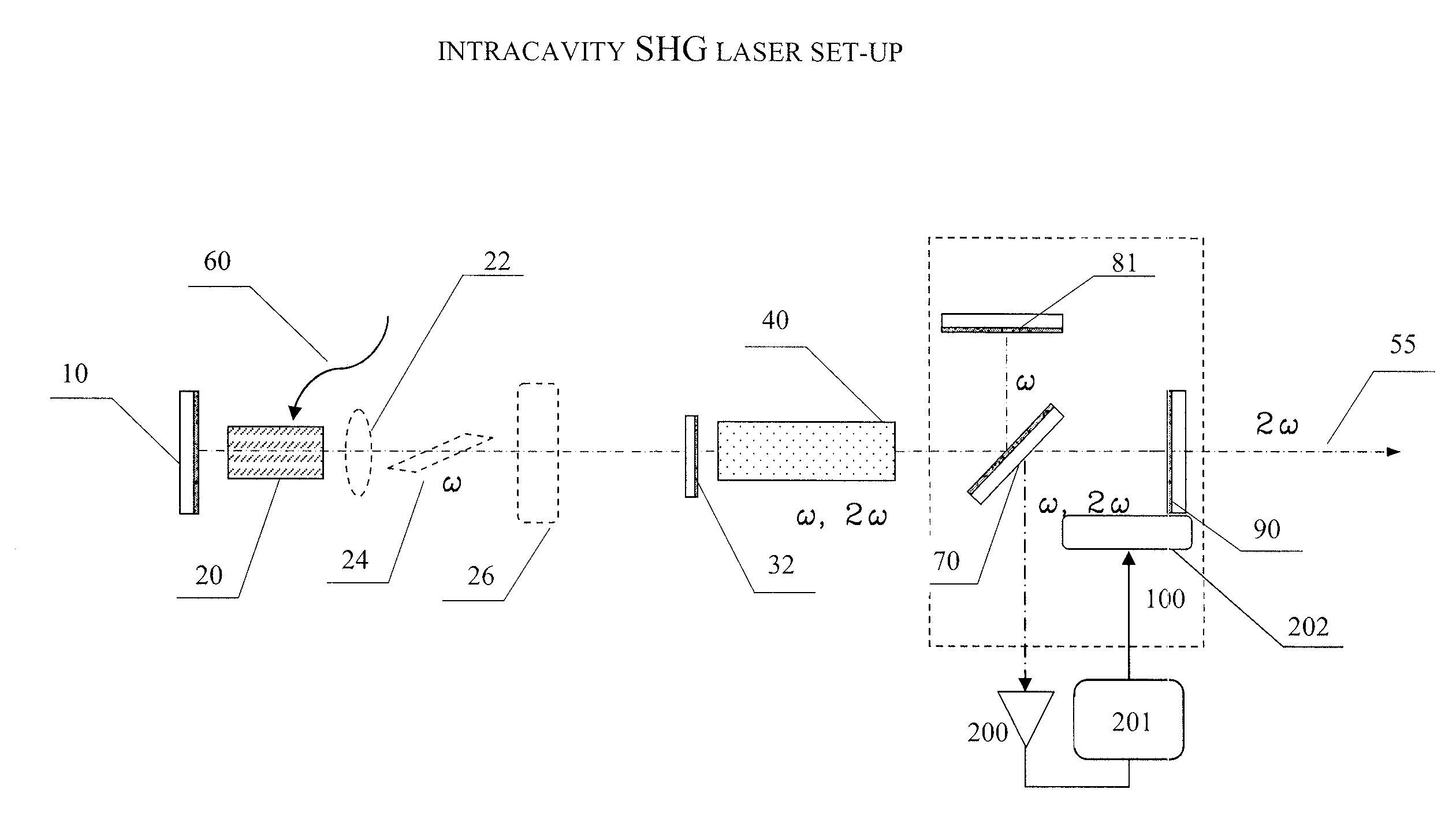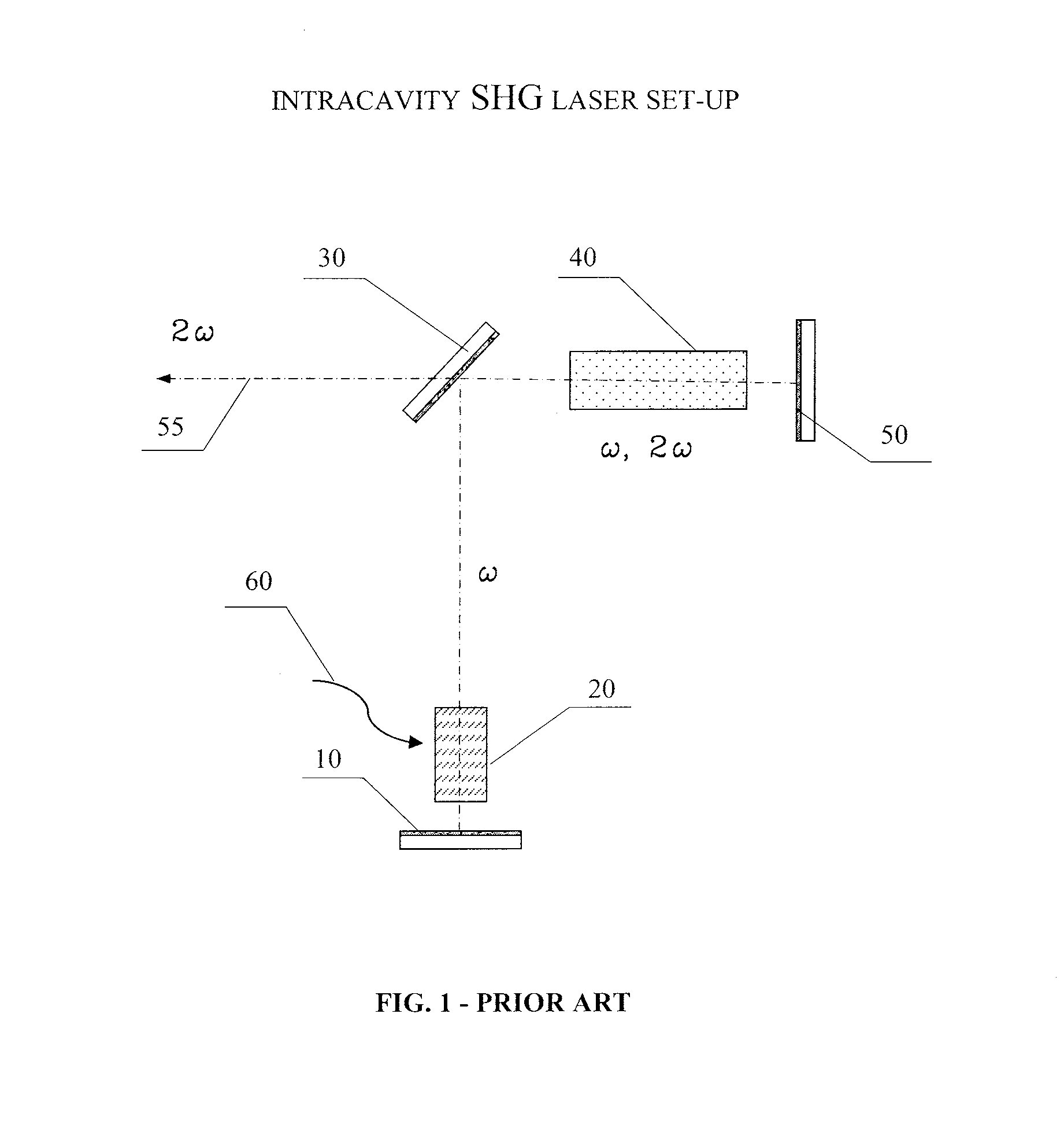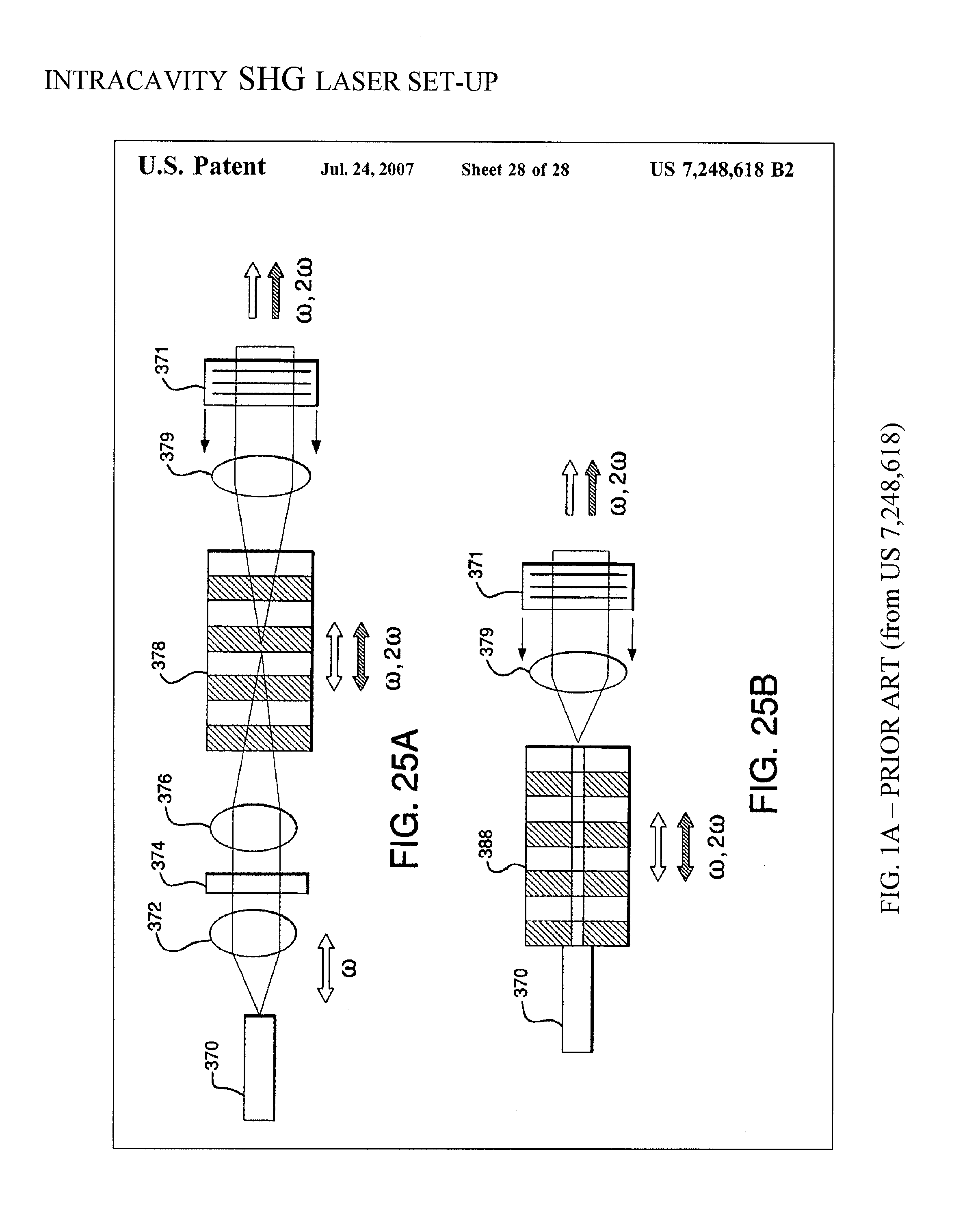Intra-cavity second harmonic generation (SHG) laser device
a laser device and second harmonic generation technology, applied in the direction of laser details, optical resonator shape and construction, electrical apparatus, etc., can solve the problems of limiting the efficiency of frequency conversion and the spectral and temporal characteristics of laser output, chaotic radiation process switching between different modes, and noisy laser output, etc., to achieve increased spectral selectivity and prolong cavity length
- Summary
- Abstract
- Description
- Claims
- Application Information
AI Technical Summary
Benefits of technology
Problems solved by technology
Method used
Image
Examples
Embodiment Construction
[0033]FIG. 1 shows a layout of laser cavity principal components previously suggested for intracavity frequency doubling, where the first cavity end reflector 10, active (laser gain) medium 20, nonlinear crystal 40, and the first cavity end reflector 50 comprise a linear type laser cavity, folded by the cavity folding mirror 30 for allowing unidirectional extraction of the power at frequency 2ω (second harmonic). The waved arrow 60 indicates that an appropriate excitation of the active medium 20 is provided. In such a layout all the cavity mirrors 10, 30, and 50 are made highly reflective about the laser fundamental frequency ω. Commonly to keep the cavity loss at minimum the reflectivity of these mirrors are made as close to 100% as technologically possible by mirror manufacturers. For uni-directional laser output the mirror 50 is also made highly reflective at the second harmonic frequency 2ω, while the folding mirror 30 is made as transmissive as possible at frequency 2ω. Due to ...
PUM
 Login to View More
Login to View More Abstract
Description
Claims
Application Information
 Login to View More
Login to View More - R&D
- Intellectual Property
- Life Sciences
- Materials
- Tech Scout
- Unparalleled Data Quality
- Higher Quality Content
- 60% Fewer Hallucinations
Browse by: Latest US Patents, China's latest patents, Technical Efficacy Thesaurus, Application Domain, Technology Topic, Popular Technical Reports.
© 2025 PatSnap. All rights reserved.Legal|Privacy policy|Modern Slavery Act Transparency Statement|Sitemap|About US| Contact US: help@patsnap.com



